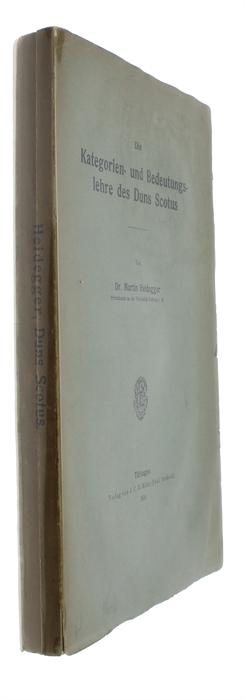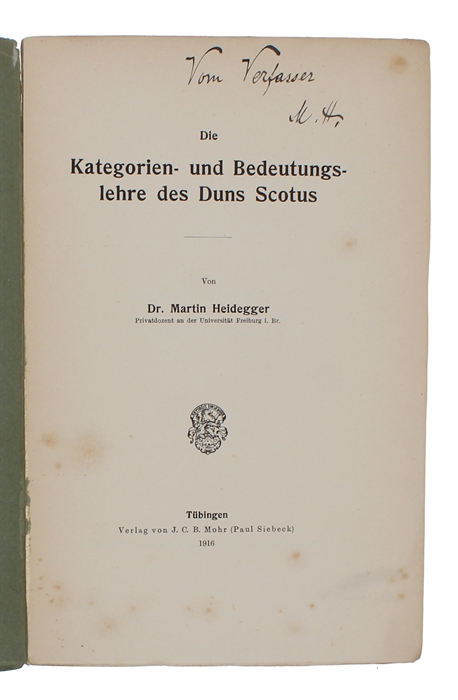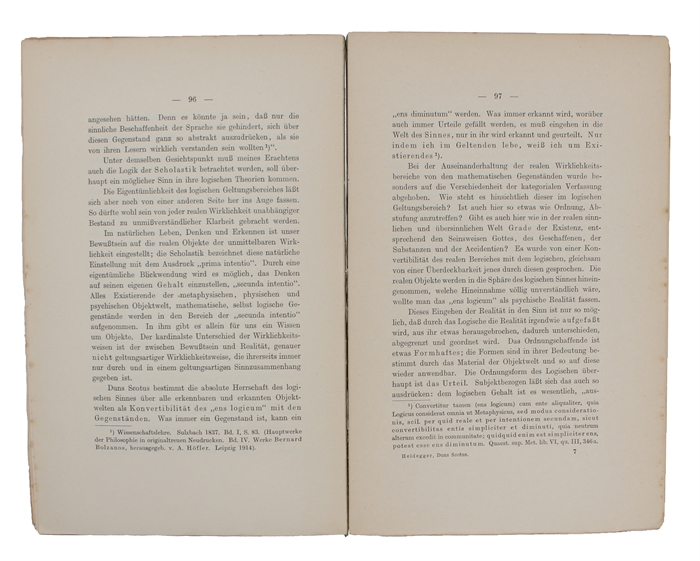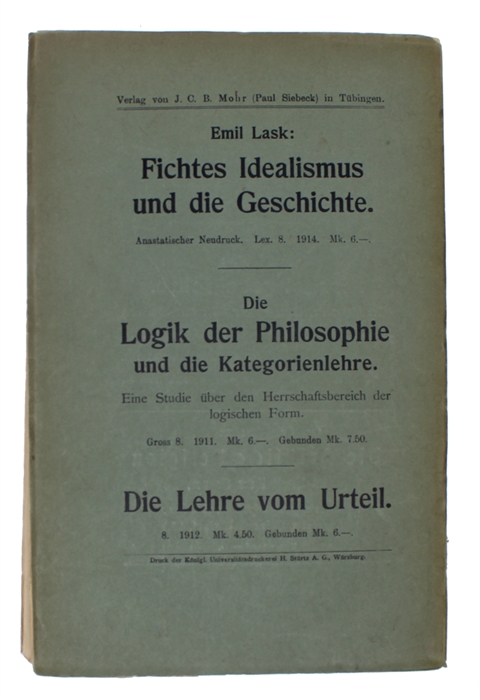HEIDEGGER'S HABILITATIONSSCHRIFT - PRESENTATION-COPY
HEIDEGGER, MARTIN.
Die Kategorien- und Bedeutungslehre des Duns Scotus.
Tübingen, J.C.B. Mohr (Paul Siebeck), 1916.
Lex 8vo. Uncut and unopened in the original printed wrappers. A stain to the front wrapper, from the removal of a bookplate on verso, which has also removed some of the advertisement-print to the top of the inside of front wrapper. Apart from this removed book plate the only real flaw that the copy has is a vertical break down the middle of the spine, from opening the block. Otherwise there is just minimal edgewear and slight brownspotting to the title-page. Inscribed by Heidegger "Vom Verfasser/ M.H." to top of title-page. (8), 245 pp.
The scarce first edition, extremely rare presentation-copy, of Heidegger's Habilitationsschrift, in which he introduces his "Hermeneutik der Fakticität".
In 1913 Heidegger was given a Ph.D. for his work "Die Lehre vom Urtheil im Psychologismus". Already in 1915 he had written his Habilitation on Duns Scotus, which was published the following year, in 1916. These two works, together with a few articles from the same period, constitute the beginning of Heidegger's path towards the question of being - the subject because of which he later became the most famous philosopher of the 20th century, establishing the philosophy that has dominated Western thinking ever since.
Heidegger's Habilitation was supervised by Heinrich Rickert, and as the title indicates, it dealt with the categories of theory of meaning of Duns Scotus. The work, around which the dissertation revolved, was the "Grammatica Speculativa", which was then ascribed to Duns Scotus but which is now considered a work by Thomas von Erfurt. The "Grammatica Speculativa" is a work about types of ways of expressions in language and the corresponding ontological categories. Heidegger's interest in this shows an early interest in the relationship between language and being. Here, he attempts to unite a Medieval signification theory with neo-Kantian logical theory and the intentionality of Husserl, which was then in the beginning of its influence. It is generally accepted that Heidegger already in his Habilitation anticipates his seminal account of Dasein later fully developed in "Sein und Zeit".
Though Heidegger's Habilitation has been overlooked for many years, it is now widely believed that there is a very direct connection between Scotus, Thomas of Erfurt, Husserl and Heidegger, leading the young Heidegger directly towards his "hermeneutical intuition" and being closely connected to the ideas that he develops fully in "Sein und Zeit".
The work itself is very rare in the first printing, and when seen, it is often in bad condition and/or lacking the wrappers. Inscribed copies are of the utmost scarcity.
Order-nr.: 60625




